Differential pathways regulating innate and adaptive antitumor immune responses by particulate and soluble yeast-derived β-glucans
- PMID: 21531981
- PMCID: PMC3128477
- DOI: 10.1182/blood-2011-02-339812
Differential pathways regulating innate and adaptive antitumor immune responses by particulate and soluble yeast-derived β-glucans
Abstract
β-glucans have been reported to function as a potent adjuvant to stimulate innate and adaptive immune responses. However, β-glucans from different sources are differential in their structure, conformation, and thus biologic activity. Different preparations of β-glucans, soluble versus particulate, further complicate their mechanism of action. Here we show that yeast-derived particulate β-glucan activated dendritic cells (DCs) and macrophages via a C-type lectin receptor dectin-1 pathway. Activated DCs by particulate β-glucan promoted Th1 and cytotoxic T-lymphocyte priming and differentiation in vitro. Treatment of orally administered yeast-derived particulate β-glucan elicited potent antitumor immune responses and drastically down-regulated immunosuppressive cells, leading to the delayed tumor progression. Deficiency of the dectin-1 receptor completely abrogated particulate β-glucan-mediated antitumor effects. In contrast, yeast-derived soluble β-glucan bound to DCs and macrophages independent of the dectin-1 receptor and did not activate DCs. Soluble β-glucan alone had no therapeutic effect but significantly augmented antitumor monoclonal antibody-mediated therapeutic efficacy via a complement activation pathway but independent of dectin-1 receptor. These findings reveal the importance of different preparations of β-glucans in the adjuvant therapy and allow for the rational design of immunotherapeutic protocols usable in clinical trials.
Figures
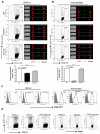
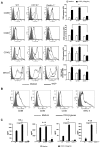
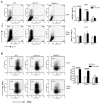
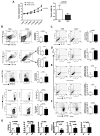
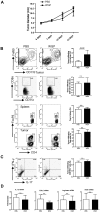
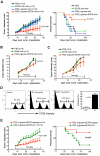
Similar articles
-
β-Glucan enhances antitumor immune responses by regulating differentiation and function of monocytic myeloid-derived suppressor cells.Eur J Immunol. 2013 May;43(5):1220-30. doi: 10.1002/eji.201242841. Epub 2013 Mar 25. Eur J Immunol. 2013. PMID: 23424024
-
Orally administered particulate beta-glucan modulates tumor-capturing dendritic cells and improves antitumor T-cell responses in cancer.Clin Cancer Res. 2010 Nov 1;16(21):5153-64. doi: 10.1158/1078-0432.CCR-10-0820. Epub 2010 Sep 20. Clin Cancer Res. 2010. PMID: 20855461 Free PMC article.
-
Up-regulation of GITRL on dendritic cells by WGP improves anti-tumor immunity in murine Lewis lung carcinoma.PLoS One. 2012;7(10):e46936. doi: 10.1371/journal.pone.0046936. Epub 2012 Oct 15. PLoS One. 2012. PMID: 23077535 Free PMC article.
-
Innate immunity induced by fungal β-glucans via dectin-1 signaling pathway.Int J Med Mushrooms. 2014;16(1):1-16. doi: 10.1615/intjmedmushr.v16.i1.10. Int J Med Mushrooms. 2014. PMID: 24940900 Review.
-
The effects of β-glucans on dendritic cells and implications for cancer therapy.Anticancer Agents Med Chem. 2013 Jun;13(5):689-98. doi: 10.2174/1871520611313050003. Anticancer Agents Med Chem. 2013. PMID: 23092290 Review.
Cited by
-
Systemic administration of β-glucan of 200 kDa modulates melanoma microenvironment and suppresses metastatic cancer.Oncoimmunology. 2017 Oct 30;7(2):e1387347. doi: 10.1080/2162402X.2017.1387347. eCollection 2018. Oncoimmunology. 2017. PMID: 29308312 Free PMC article.
-
Clinical and Physiological Perspectives of β-Glucans: The Past, Present, and Future.Int J Mol Sci. 2017 Sep 5;18(9):1906. doi: 10.3390/ijms18091906. Int J Mol Sci. 2017. PMID: 28872611 Free PMC article. Review.
-
Kluyveromyces marxianus and Saccharomyces boulardii Induce Distinct Levels of Dendritic Cell Cytokine Secretion and Significantly Different T Cell Responses In Vitro.PLoS One. 2016 Nov 29;11(11):e0167410. doi: 10.1371/journal.pone.0167410. eCollection 2016. PLoS One. 2016. PMID: 27898740 Free PMC article.
-
Exploring the Properties and Application Potential of β-Glucan in Skin Care.Food Sci Nutr. 2025 Apr 25;13(4):e70212. doi: 10.1002/fsn3.70212. eCollection 2025 Apr. Food Sci Nutr. 2025. PMID: 40291929 Free PMC article. Review.
-
β-Glucan reprograms alveolar macrophages via neutrophil/IFNγ axis in a murine model of lung injury.Elife. 2025 Jul 8;13:RP102068. doi: 10.7554/eLife.102068. Elife. 2025. PMID: 40624927 Free PMC article.
References
-
- Smyth MJ, Hayakawa Y, Cretney E, et al. IL-21 enhances tumor-specific CTL induction by anti-DR5 antibody therapy. J Immunol. 2006;176(10):6347–6355. - PubMed
Publication types
MeSH terms
Substances
Grants and funding
LinkOut - more resources
Full Text Sources
Other Literature Sources
Molecular Biology Databases

